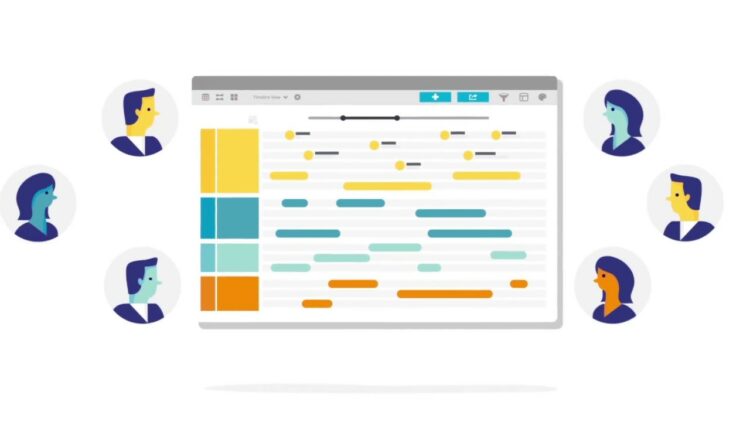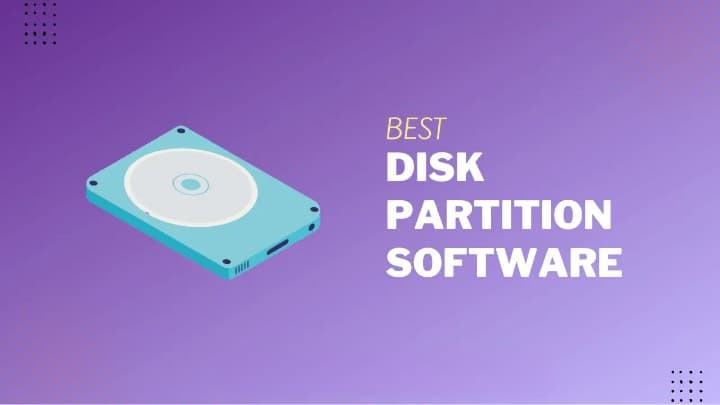
Businesses need help managing the entire product development cycle manually. At this point, businesses require Product Lifecycle Management (PLM) software. PLM software provides a comprehensive solution to assist businesses in streamlining the entire product development process. It centralizes designing, producing, marketing, and distributing the product. Therefore, the software ensures the product is effectively introduced and developed.
Businesses require PLM software to improve teamwork and communication throughout a product’s lifecycle. The product development teams will increase, and the errors will decrease because it helps teams collaborate swiftly and effortlessly. It is best to use it to make informed decisions about your products based on clear information. This article defines PLM software and discusses its applications and benefits. In addition, we will present a list of the most effective product lifecycle management software. These solutions stand out due to their unique features that appeal to numerous business requirements.
Why Do Businesses Use A PLM Software?
PLM software offers a comprehensive solution and can provide multiple benefits to organizations. It allows businesses to maintain product data and processes efficiently throughout the product life cycle. Let’s examine an example to comprehend how and why businesses employ Product Lifecycle Management software. Consider a business that manufactures cutting-edge motorcycles to be a new product. Here is the duration of the product lifecycle in its entirety.
- The company’s design team develops the fundamental concept for the bike.
- The engineering team creates the design of the product.
- Once the design is complete, the production team begins manufacturing the bike.
Using PLM software, the bike company can manage the processes mentioned above. It ensures all team members can access the most recent design documentation and specifications. In addition, the company can manage change requests and version control to ensure that everyone is working with the most recent product version. Using Product Lifecycle Management software, the company’s supply chain can also be managed. The supply chain department can oversee the following processes.
- Provide information regarding the product’s constituent parts.
- Recruit the suppliers of the components.
- Determine the price of the required products.
After acquiring all of this information, the company can use it to
- Improve the supply chain.
- Save expenses.
- Ensure that the product is manufactured properly.
Using a single software, it is possible to manage all departments simultaneously, as demonstrated by the preceding example. Each department works with the same product, but each has its data requirements. As a result, the following tasks become simpler to accomplish.
- Keeping product data in one location.
- Collaborate between departments.
- Completely automate the product development process.
- Optimize the distribution chain.
PLM Software Benefits
Product management software reduces the effort required for product development in various ways. The following are the benefits of using PLM software.
Simplify Product Development
Using PLM software, managing product design, development, and production in a single location is possible. It assists organizations in streamlining the product development process. This eliminates the need for data segmentation and decreases the potential for delays and errors.
Increase Collaboration
PLM software enhances communication between a company’s numerous teams and departments. Additionally, it guarantees that every team member is working with the most recent and comprehensive product information. As a consequence, the risk of miscommunication during product development is reduced.
Decreased Expenditure
During product development, businesses can obtain enhanced product insights with PLM software. Companies can identify areas where costs can be reduced. Consequently, costs can be optimized by streamlining production, minimizing material waste, and augmenting the supply chain.
Implement Compliance
PLM software assists businesses in ensuring that their products adhere to industry standards and laws. In addition, it ensures that the products adhere to all applicable safety, environmental, and other regulations.
Reduced Marketing Time
A significant advantage of centralized product data management is reduced time to market. The PLM solution enables the design team to function more efficiently and transmit design data to production. Consequently, producing and marketing the product requires less time, preserving its competitiveness.
Increase Product Quality
PLM software enables businesses to gather and manage product data. For instance, businesses receive design criteria, quality standards, and testing results. By providing a centralized repository for product data, companies can ensure that their products meet all applicable quality standards.
Boost Productivity
PLM systems can eliminate time-consuming tasks such as entering duplicate data into a distinct system, verifying data accuracy, and searching for absent data. Additionally, it can reduce processing errors and associated rework caused by outdated data. This can be especially beneficial for product development or operations employees, as teams can focus on higher-value tasks and increase their overall output.
Maximize Revenue Growth
Return on investment (ROI) can be maximized with PLM software by delivering two main benefits: increased revenue and decreased costs. Revenue expansion is crucial because it contributes to profits four times more than expense reduction. Product Lifecycle Management software, unlike ERP systems, can manage cost management, cost reduction, and revenue growth.
Accelerate Innovation
By implementing a PLM system, businesses can increase their innovative capacity while retaining flexibility and agility. Product teams can collaborate to provide the best ideas and complete the optimal product design. However, it will be fine where they are physically located. In addition, businesses can safeguard their intellectual property, ensuring that future innovation is not impeded.
PLM Software Features
Learn the features that will make PLM software optimal for your business before choosing it. Here are some features you should consider when selecting a solution.
Product Data Management (PDM) – This feature allows you to manage information about products, such as CAD files, BOMs, and engineering specifications.
Collaboration Tools – Effective product lifecycle management requires the capacity to collaborate with multiple teams. These teams will be involved in the process of product development. Collaboration technologies include project management, process automation, and real-time messaging.
Workflow Management – Workflow Management increases the efficiency of processes and guarantees that the appropriate people are working on the appropriate tasks at the appropriate time. Identifying and eliminating process constraints during product development is also advantageous.
Analytics and Reporting – This feature will provide you with vital information regarding the progress of the product development process. Consequently, you can make prudent business decisions and eliminate errors.
System Integration – Integration with other systems, including ERP, MES, and CRM systems. These integrations will assist in streamlining the product development process and reducing data silos.
Security Measures – Choosing a PLM system with robust security measures is essential to prevent security breaches. A robust security measure is required since the software will handle sensitive data such as product designs and intellectual property.
Mobile Accessibility – Given the growing popularity of remote work, choosing a PLM system that supports mobile access is essential. Thus, team members can use the software to access the product development process from any location.
Now that you are aware of the features that must be present in PLM software, you can evaluate its suitability. Now is the time to learn about the most effective product lifecycle management (PLM) software.
Top Product Lifecycle Management Tools To Try
As we curated, the best Product Lifecycle Management Tools are listed below.
1. Aha

Aha is a cloud-based product roadmap tool designed to assist businesses in aligning their product strategy with the overall business objective. It provides a variety of tools to assist businesses with managing product roadmaps. In addition, it helps in establishing priorities for product development and working with team members.
Features:
- Create a product roadmap that correlates with your business’s strategic objectives.
- Gain a comprehensive understanding of product strategy that helps the team make informed decisions.
- Capture and evaluate new product ideas from customers, team members, and other stakeholders.
- Follow the progression of product development, monitor resource allocation, and make informed decisions.
- Collaboration tools for sharing feedback and participating in product planning, development, and discussion.
- Accelerate product innovation through centralized consumer feedback, request prioritization, and community engagement.
- Integrates with multiple third-party tools, including Jira, GitHub, Trello, and Asana.
2. Productboard

Productboard is a potent solution that assists product teams in comprehensively understanding their customer’s requirements. It determines which features or products will be developed next, ensuring all organization members collaborate with the product roadmap.
Features:
- Construct road maps that can be modified to meet the needs of any consumer.
- Prioritize features based on consumer and company requirements.
- Use AI to comprehend client demands and centralize feedback collection.
- Involve customers in product planning to validate concepts and close the feedback cycle.
- Integrate with multiple platforms in a flexible manner using integrations and APIs.
This tool helps you speed up the production process by focusing on what is most important. In addition, you can improve the progress of the business by motivating all stakeholders with a strategy. By maintaining transparency and nurturing collaboration around product plans, the time-to-market of the products is thereby decreased.
3. monday.com Dev

monday.com is a well-known work operating system (Work OS) that assists you in managing tasks, projects, and workflows. It centralizes your entire product lifecycle through a highly visual and adaptable platform. Product backlog, product roadmap, sprint management, Kanban, project management, and defect tracking are among the outstanding tools you will receive.
Features:
- Generate and personalize a product road map with full visibility into work progress.
- A completely collaborative platform that facilitates various departments in the development of features.
- Customizable views can be incorporated into your spring planning procedure to facilitate alterations.
- Track defects using a centralized and intuitive board view.
- Maintain collaboration between departments using a single source.
- Manual and irrelevant tasks are minimized to concentrate on the primary undertaking.
With monday.com, you can create customized roadmaps and Gantt charts and visualize additional vital data. Therefore, you will receive a comprehensive overview of your product development process.
4. Roadmunk

Features:
- You can generate a comprehensive PDF guide to create a roadmap in minutes.
- With the timeline and swimlane visualization, the road map is suitable for presentation to the board of directors.
- Produce multiple roadmap representations from a single data set.
- Export visible and shareable roadmaps in URL, PNG, and HTML formats.
- Prioritize framework to create product concepts based on gathered feedback.
- Customers and team members have direct access to the feedback portal.
- Roadmap templates for product, marketing, project, and technology are available.
- There are available guides for advancing project management skills and procedures.
5. Jira Software

The Jira software from Atlassian is an effective project management and issue-tracking tool. Agile software development teams frequently employ this PLM software. It provides tools and features for team planning, monitoring, and product efficiency management.
Features:
- A centralized interface to obtain all product development information.
- Robust system for capturing, monitoring, and resolving software defects and issues.
- Use user stories, problems, and tasks to break the large concepts into manageable chunks.
- Track and discuss your team’s work while maintaining complete visibility and openness.
- With accurate and current information, expedite more packages.
- Real-time visual reports to enhance the performance of the team.
- The entire product development process is automated to maintain team focus and speed up workflow.
- Use pre-made templates to initiate the product and project development process.
- Integrate easily with various tools to serve as the central source of information.
With Jira, team collaboration is flexible because everything is visible in a single location. The speed of project delivery is substantially accelerated by real-time monitoring. With less friction in the development process, you can release and market products more quickly. Moreover, the visibility of reports across an organization enables organizations to make prudent decisions.
Also, Take A Look At:
Conclusion:
PLM software will be very helpful for businesses seeking to streamline their product journey. Numerous options are available on the market, but the best option for your organization depends on its particular requirements. However, after thoroughly evaluating several alternatives, we have compiled this list of some of the most effective product lifecycle management software. Each software has distinctive features and manages product lifecycle management competently. Choose one that correlates closely with your business objectives.


